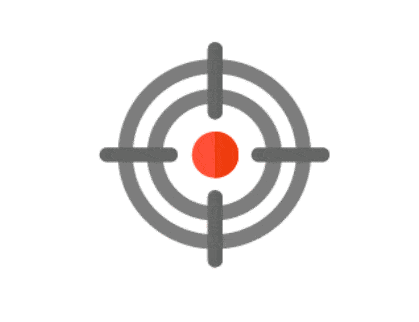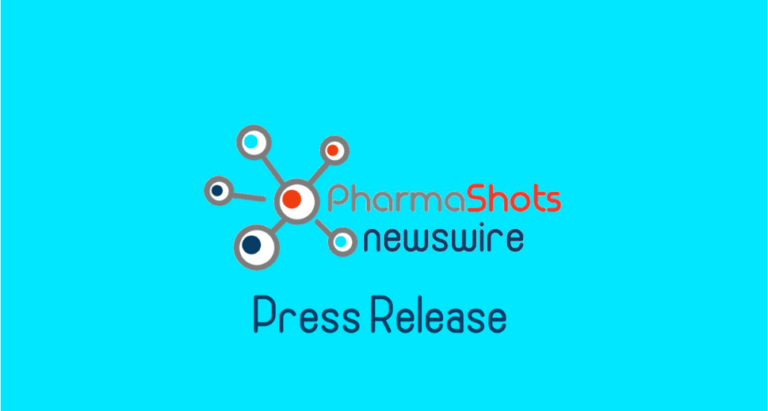Neurocrine Biosciences Announces FDA Approval of CRENESSITY™ (crinecerfont), a First-in-Class Treatment for Children and Adults With Classic Congenital Adrenal Hyperplasia
- CRENESSITY, the first new treatment available in 70 years to the classic congenital adrenal hyperplasia (CAH) community, offers a paradigm-shifting treatment approach
- FDA approval supported by data from the largest-ever clinical trial program in pediatric and adult patients with classic CAH
- CRENESSITY is expected to be commercially available in approximately one week
- Rare Pediatric Disease Priority Review Voucher granted in connection with approval
SAN DIEGO, Dec. 13, 2024 /PRNewswire/ -- Neurocrine Biosciences, Inc. (Nasdaq: NBIX) today announced the U.S. Food and Drug Administration has approved CRENESSITY™ (crinecerfont) capsules and oral solution as an adjunctive treatment to glucocorticoid replacement to control androgens in adult and pediatric patients four years of age and older with classic congenital adrenal hyperplasia (CAH), a rare, serious and lifelong genetic condition involving the adrenal glands. CRENESSITY, a potent and selective oral corticotropin-releasing factor type 1 receptor (CRF1) antagonist, is the first and only classic CAH treatment that directly reduces excess adrenocorticotropic hormone (ACTH) and downstream adrenal androgen production, allowing for glucocorticoid dose reduction. It is a breakthrough in the treatment landscape for classic CAH.
"For the last three decades, Neurocrine Biosciences, together with our late founder, Wylie W. Vale, has conducted groundbreaking research uncovering the critical role of corticotropin-releasing factor and its receptor, CRF1, in the pathophysiology of congenital adrenal hyperplasia," said Kyle W. Gano, Ph.D., Chief Executive Officer, Neurocrine Biosciences. "The approval of CRENESSITY is a significant milestone for the CAH community, and we are grateful to the individuals who participated in our clinical trials, including their families and caregivers, and to the clinical investigators who helped advance a new therapy and class of medicines."
"Patients and families struggle to achieve balance between managing the symptoms of CAH and the side effects or complications of treatment with high-dose steroids, which may impact quality of life," said Dina Matos, Executive Director, CARES Foundation. "We are grateful to Neurocrine Biosciences for engaging with our community throughout the drug development process to understand our needs and ultimately providing this new medication that can help reduce excess adrenal androgens and the need for high-dose steroid treatment for individuals living with CAH."
CRENESSITY is expected to be commercially available in approximately one week. The medication will be provided through PANTHERx Rare, a specialty pharmacy, to centralize and simplify CRENESSITY prescription fulfillment.
Neurocrine Biosciences is committed to supporting patients in obtaining treatment with CRENESSITY by offering Neurocrine Access Support, a free, comprehensive assistance program created for patients, caregivers and healthcare providers. It offers a range of options to make sure patients have everything they need to begin and continue taking CRENESSITY. A dedicated Care Coordinator, backed by a team, is available to help patients and caregivers navigate the insurance process and identify appropriate financial assistance options. Most patients will pay $10 or less per month for CRENESSITY*. For more information, visit www.NBIaccess.com/crenessity or call 1-855-CRNSITY (276-7489) Monday-Friday 8 am-8 pm ET.
*Additional terms and conditions apply.
CAHtalyst™ Clinical Program Overview:
The FDA approval is supported by the largest-ever clinical trial program of classic CAH, the CAHtalyst Pediatric and Adult Phase 3 global registrational studies. CAHtalyst Phase 3 data results in pediatric and adult patients with classic CAH were published in The New England Journal of Medicine.
"The clinical results across both CAHtalyst studies support the efficacy and safety profile of CRENESSITY and its ability to reduce the overproduction of adrenal androgens, allowing for a meaningful reduction in glucocorticoid dosage, while maintaining or enhancing control of these androgens," said Richard Auchus, M.D., Ph.D., Professor, University of Michigan Health, Principal Investigator. "Chronic treatment with supraphysiologic glucocorticoids can cause a number of short- and long-term health consequences, such as obesity, hypertension and osteoporosis, so the ability for patients with CAH to lower their glucocorticoid dose to a more physiologic level can have profound benefits."
In both CAHtalyst studies, CRENESSITY enabled lower steroid doses and decreased androgen levels.
Phase 3 CAHtalyst Pediatric Study:
- The CAHtalyst Pediatric study met its primary endpoint, with CRENESSITY significantly decreasing androstenedione levels from baseline to Week 4 versus patients taking placebo who experienced a substantial increase in androstenedione levels.
- Children taking CRENESSITY were also able to significantly reduce their GC doses at Week 28 while maintaining or improving androgen levels, a key secondary endpoint.
- Children taking CRENESSITY saw approximately four times greater reduction in androstenedione compared with those taking placebo.
- Approximately four times greater steroid dose reduction in children taking CRENESSITY was seen compared with those taking placebo.
- Children taking CRENESSITY saw approximately 12 times greater reduction in 17-hydroxyprogesterone (17-OHP) compared with those taking placebo.
- Headache, abdominal pain, fatigue, nasal congestion and nosebleed were the most common adverse drug reactions (ADRs) among the pediatric population treated with CRENESSITY. Most side effects were temporary and mild to moderate in severity.
Phase 3 CAHtalyst Adult Study:
- The CAHtalyst Adult study met its primary endpoint with CRENESSITY enabling significant GC dose reductions at Week 24 (while maintaining or improving baseline androstenedione levels) and key secondary endpoint of decreasing androstenedione levels at Week 4.
- A significantly higher number of patients taking CRENESSITY (63%) achieved a GC dose in the physiologic range while androstenedione was maintained or improved compared with patients taking placebo (18%).
- Approximately two times greater steroid dose reduction was seen in people taking CRENESSITY compared with those taking placebo.
- People taking CRENESSITY saw an eight times greater reduction in androstenedione compared with those taking placebo.
- People taking CRENESSITY saw a 37 times greater reduction in 17-OHP compared with those taking placebo.
- Fatigue, headache, dizziness, joint pain, back pain, decreased appetite and muscle pain were the most common ADRs in the CRENESSITY treatment group. Most side effects were temporary and mild to moderate in severity.
CRENESSITY was well tolerated with few treatment-related adverse events in both CAHtalyst studies. Pediatric and adult patients taking CRENESSITY had no treatment-related serious adverse events.
Adrenal insufficiency and crisis are risks of living with CAH that CRENESSITY does not address and can occur when a patient's GC dose is too low. In the CAHtalyst Pediatric study, there were no cases of adrenal crisis among patients taking CRENESSITY or placebo. In the CAHtalyst Adult study, two patients (1.6%) taking CRENESSITY experienced adrenal crisis. No patients on placebo experienced adrenal crisis. However, one patient (1.7%) on placebo experienced adrenal insufficiency. Patients should work with their healthcare provider to manage GC dosing while taking CRENESSITY.
For more information about CRENESSITY, visit Crenessity.com.
About Congenital Adrenal Hyperplasia
Congenital adrenal hyperplasia (CAH) is a rare genetic condition that results in an enzyme deficiency that alters the production of adrenal steroid hormones, such as cortisol, aldosterone and adrenal androgens, which are essential for life. Approximately 95% of CAH cases are caused by variants of the CYP21A2 gene that leads to deficiency of the enzyme 21-hydroxylase (21-OH). Severe deficiency of this enzyme leads to an inability of the adrenal glands to produce enough cortisol and, in approximately 75% of cases, aldosterone. Because individuals with CAH are still able to produce androgens, the unused precursors that would normally be used to make cortisol instead result in the production of excess amounts of androgens. If left untreated, CAH can result in salt wasting, dehydration and even death.
Historically, exogenous glucocorticoids (GCs) have been used not only to correct the endogenous cortisol deficiency, but doses used are higher than cortisol replacement needed (supraphysiologic) to lower the levels of adrenocorticotropic hormone (ACTH) and adrenal androgens. However, GC treatment at high doses has been associated with serious and significant complications of steroid excess, including metabolic issues such as weight gain and diabetes, cardiovascular disease and osteoporosis. Additionally, long-term treatment with high-dose GCs may have psychological and cognitive impact, such as changes in mood and memory. Adrenal androgen excess has been associated with abnormal bone growth and development in pediatric patients, female health problems such as excess facial hair growth and menstrual irregularities, testicular rest tumors in males and fertility issues in both sexes.
About The CAHtalyst™ Studies
The Phase 3 CAHtalyst™ global registrational studies were designed to evaluate the safety, efficacy and tolerability of CRENESSITY in children and adults with classic congenital adrenal hyperplasia (CAH) due to 21-hydroxylase deficiency. The CAHtalyst studies were the largest-ever clinical trial program in classic CAH, including 285 pediatric and adult patients.
The CAHtalyst Pediatric study included 103 pediatric patients aged four to 17 years. The study tested two questions. The first question evaluated whether four weeks of CRENESSITY treatment could improve androgen control. The second question evaluated whether an additional 24 weeks of CRENESSITY treatment enabled customized glucocorticoid (GC) down-titration while androstenedione levels were maintained or improved. The CAHtalyst Adult study included 182 adult patients aged 18 to 58 years. Similarly, the first question of the study evaluated whether four weeks of CRENESSITY treatment could improve androgen control, and the second question evaluated whether an additional 20 weeks of CRENESSITY treatment enabled GC reduction to physiologic range while androstenedione levels were maintained or improved.
Data from the CAHtalyst Phase 3 studies supported approval of CRENESSITY by the U.S. Food and Drug Administration in December 2024. The open-label extension treatment portions of both studies are ongoing.
About CRENESSITY™ (crinecerfont)
CRENESSITY™ is a potent and selective, oral corticotropin-releasing factor type 1 receptor (CRF1) antagonist developed to reduce and control excess adrenocorticotropic hormone (ACTH) and adrenal androgens through a non-glucocorticoid (GC) mechanism for the treatment of classic congenital adrenal hyperplasia (CAH). Antagonism of CRF1 receptors in the pituitary has been shown to decrease ACTH levels, which in turn decreases the production of adrenal androgens and potentially the symptoms associated with CAH. The robust clinical study data demonstrate that lowering adrenal androgen levels with CRENESSITY enables lower, more physiologic dosing of GCs to replace missing cortisol.
CRENESSITY comes in capsules and an oral solution. The capsule formulation is available in 50 mg and 100 mg doses. The oral solution is available as a 50 mg/mL strength formulation. For adults 18 years and older, the recommended dosage is 100 mg twice daily taken orally with a meal. For pediatric patients four to 17 years of age weighing less than 55 kg (121 lbs), the recommended dosage is based on body weight and is administered twice daily, taken orally with a meal. For pediatric patients weighing more than 55 kg (121 lbs), the recommended dosage is 100 mg twice daily taken orally with a meal. Healthcare providers can work with patients to determine the appropriate formulation for use depending on patient needs. Patients receiving CRENESSITY should continue GC therapy for cortisol replacement.
Important Information
Approved Uses
CRENESSITY (crinecerfont) is a prescription medicine used together with glucocorticoids (steroids) to control androgen (testosterone-like hormone) levels in adults and children 4 years of age and older with classic congenital adrenal hyperplasia (CAH).
IMPORTANT SAFETY INFORMATION
Do not take CRENESSITY if you:
Are allergic to crinecerfont, or any of the ingredients in CRENESSITY.
CRENESSITY may cause serious side effects, including:
Allergic Reactions. Symptoms of an allergic reaction include tightness of the throat, trouble breathing or swallowing, swelling of the lips, tongue, or face, and rash. If you have an allergic reaction to CRENESSITY, get emergency medical help right away and stop taking CRENESSITY.
Risk of Sudden Adrenal Insufficiency or Adrenal Crisis With Too Little Glucocorticoid (Steroid) Medicine. Sudden adrenal insufficiency or adrenal crisis can happen in people with congenital adrenal hyperplasia who are not taking enough glucocorticoid (steroid) medicine. You should continue taking your glucocorticoid (steroid) medicine during treatment with CRENESSITY. Certain conditions such as infection, severe injury, or shock may increase your risk for sudden adrenal insufficiency or adrenal crisis. Tell your healthcare provider if you get a severe injury, infection, illness, or have planned surgery during treatment. Your healthcare provider may need to change your dose of glucocorticoid (steroid) medicine.
Before taking CRENESSITY, tell your healthcare provider about all of your medical conditions, including if you are pregnant or plan to become pregnant, or are breastfeeding or plan to breastfeed.
Tell your healthcare provider about all the medicines you take, including prescription and over-the counter medicines, vitamins, and herbal supplements.
The most common side effects of CRENESSITY in adults include tiredness, headache, dizziness, joint pain, back pain, decreased appetite, and muscle pain.
The most common side effects of CRENESSITY in children include headache, stomach pain, tiredness, nasal congestion, and nose bleeds.
These are not all the possible side effects of CRENESSITY. Call your healthcare provider for medical advice about side effects. You are encouraged to report negative side effects of prescription drugs to the FDA. Visit MedWatch at www.fda.gov/medwatch or call 1-800-FDA-1088.
Dosage Forms and Strengths: CRENESSITY is available in 50 mg and 100 mg capsules and as an oral solution of 50 mg/mL.
Please see full Prescribing Information
About Neurocrine Biosciences, Inc.
Neurocrine Biosciences is a leading neuroscience-focused, biopharmaceutical company with a simple purpose: to relieve suffering for people with great needs, but few options. We are dedicated to discovering and developing life-changing treatments for patients with under-addressed neurological, neuroendocrine and neuropsychiatric disorders. The company's diverse portfolio includes FDA-approved treatments for tardive dyskinesia, chorea associated with Huntington's disease, classic congenital adrenal hyperplasia, endometriosis* and uterine fibroids,* as well as a robust pipeline including multiple compounds in mid- to late-phase clinical development across our core therapeutic areas. For three decades, we have applied our unique insight into neuroscience and the interconnections between brain and body systems to treat complex conditions. We relentlessly pursue medicines to ease the burden of debilitating diseases and disorders, because you deserve brave science. For more information, visit neurocrine.com, and follow the company on LinkedIn, X (formerly Twitter) and Facebook. (*in collaboration with AbbVie)
The NEUROCRINE BIOSCIENCES Logo Lockup and YOU DESERVE BRAVE SCIENCE are registered trademarks of Neurocrine Biosciences, Inc. CRENESSITY and CAHtalyst are trademarks of Neurocrine Biosciences, Inc.
Forward-Looking Statements
In addition to historical facts, this press release contains forward-looking statements that involve a number of risks and uncertainties. These statements include, but are not limited to, statements regarding the potential benefits to be derived from CRENESSITY for the treatment of classic congenital adrenal hyperplasia (CAH) due to 21-hydroxylase deficiency; the value and benefits CRENESSITY brings to patients with CAH; the ability of Neurocrine Biosciences to ensure patients have access to CRENESSITY; and whether the results from our clinical trials of CRENESSITY are indicative of real-world results. Factors that could cause actual results to differ materially from those stated or implied in the forward-looking statements include, but are not limited to, the following: risks and uncertainties associated with Neurocrine Biosciences' business and finances in general, as well as risks and uncertainties associated with the commercialization of CRENESSITY; whether CRENESSITY receives adequate reimbursement from third-party payors; the degree and pace of market uptake of CRENESSITY; risks and uncertainties relating to competitive products and technological changes that may limit demand for CRENESSITY; risks associated with the Company's dependence on third parties for development and manufacturing activities related to CRENESSITY, and the ability of the Company to manage these third parties; risks that additional regulatory submissions for CRENESSITY or other product candidates may not occur or be submitted in a timely manner; risks that the FDA or other regulatory authorities may make adverse decisions regarding CRENESSITY; risks that post-approval CRENESSITY commitments or requirements may be delayed; risks that CRENESSITY may be precluded from commercialization by the proprietary or regulatory rights of third parties, or have unintended side effects, adverse reactions or incidents of misuse; risks and uncertainties relating to competitive products and technological changes that may limit demand for CRENESSITY; and other risks described in the Company's periodic reports filed with the Securities and Exchange Commission, including without limitation the Company's quarterly report on Form 10-Q for the quarter ended September 30, 2024. Neurocrine Biosciences disclaims any obligation to update the statements contained in this press release after the date hereof other than required by law.
© 2024 Neurocrine Biosciences, Inc. All Rights Reserved. CP-CFT-US-0070 12/2024
SOURCE Neurocrine Biosciences, Inc.





